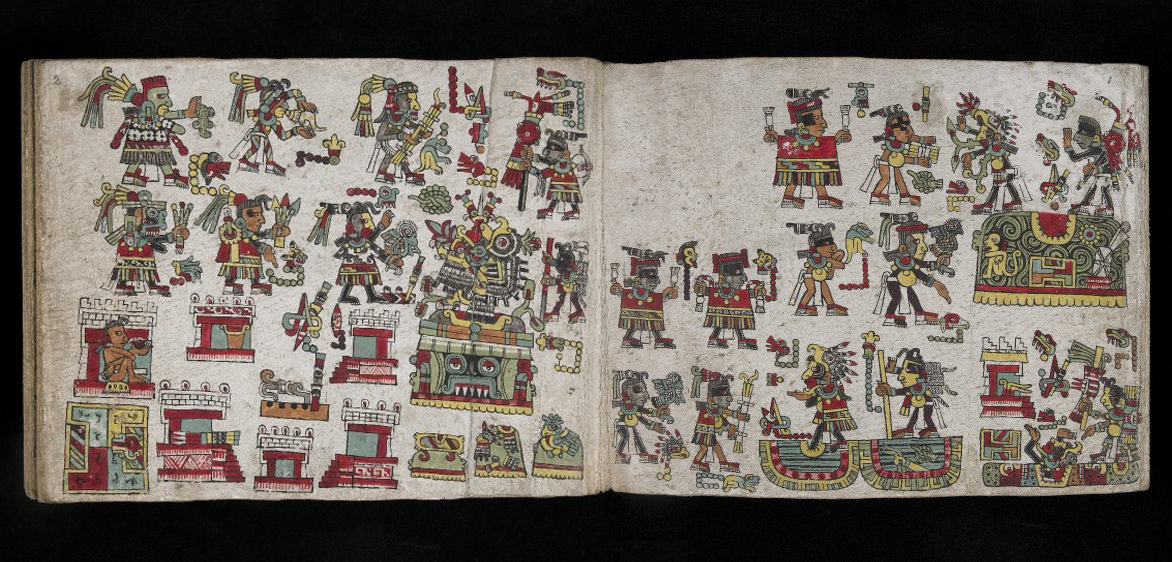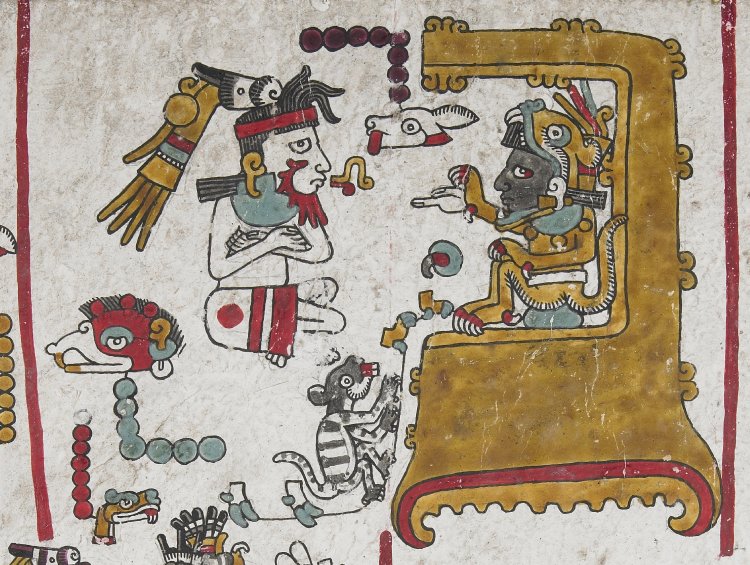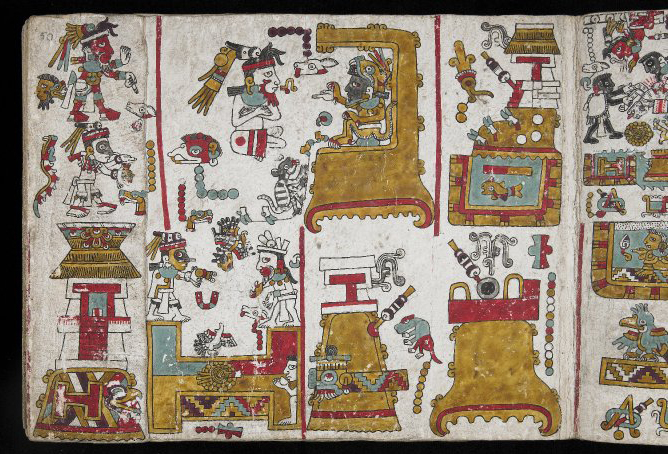
Folio one and two, Codex Zouche-Nuttall, 1200-1521, C.E., Mixtec, Late Postclassic period, deer skin, 47 leaves, each 19 x 23.5 cm, Mexico © Trustees of the British Museum
This is one of a small number of known Mexican codices (screenfold manuscript books) dating to pre-Hispanic times. It is made of deer skin and comprises 47 leaves.

Folio fifty enthroned Mixtec ruler, Eight Deer Jaguar-Claw (detail), Codex Zouche-Nuttall, 1200-1521, C.E., Mixtec, Late Postclassic period, deer skin, 47 leaves, each 19 x 23.5 cm, Mexico © Trustees of the British Museum
The powerful ruler Eight Deer Jaguar-Claw can be seen here (above), sitting on a throne with his name next to him (8 circles and a deer’s head).
The Zouche-Nuttall Codex contains two narratives: one side of the document relates the history of important centres in the Mixtec region, while the other, starting at the opposite end, records the genealogy, marriages and political and military feats of the Mixtec ruler, Eight Deer Jaguar-Claw. This ruler is depicted at top center, next to his calendric name (8 circles and a deer’s head). It was made by the Mixtec people, some of whom joined the Aztec empire. It uses a kind of picture-writing showing important Mixtec events, with special signs for names and dates.

Folio fifty, Codex Zouche-Nuttall, 1200-1521, C.E., Mixtec, Late Postclassic period, deer skin, 47 leaves, each 19 x 23.5 cm, Mexico © Trustees of the British Museum
Very few Mesoamerican pictorial documents have survived destruction and it is not clear how the Codex Zouche-Nuttall reached Europe. In 1859 it turned up in a Dominican monastery in Florence. Years later, Sir Robert Curzon, 14th Baron Zouche (1810-73), loaned it to The British Museum. His books and manuscripts were inherited by his sister, who donated the Codex to the Museum in 1917. The Codex was first published by Zelia Nuttall in 1902.
Suggested readings:
E.H. Boone, Stories in red and black: Pictorial Histories of the Aztecs and Mixtecs (Austin, University of Texas Press, 2000).
Z. Nuttall, Facsimile of an Ancient Mexican Codex Belonging to Lord Zouche of Harynworth, England (Cambridge, Mass., Peabody Museum of American Archaeology and Ethnology, Harvard University, 1902).
G. Brotherstone, Painted books of Mexico (London, The British Museum Press, 1995).
C. McEwan, Ancient Mexico in the British (London, The British Museum Press, 1994).
F. Anders, M. Jansen and G. A. Pérez Jiménez, Códice Zouche-Nuttall, facsimile with commentary and line drawing (Madrid, Sociedad Estatal Quinto Centenario; Graz, Akademische Druck-u. Verlagsanstalt; Mexico City, Fondo de Cultura Económica, 1992).
© Trustees of the British Museum

